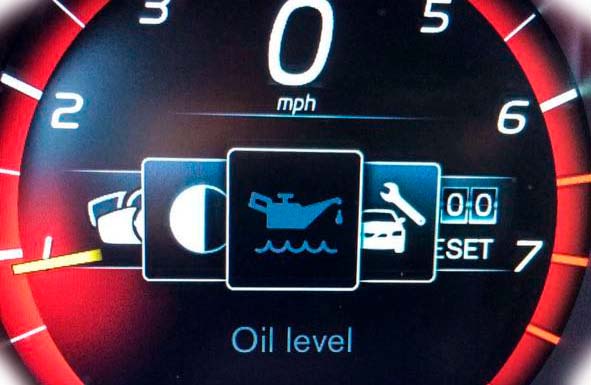Oil lights are an important part of any vehicle, and it is crucial to know why they flicker. The flickering of an oil light can indicate serious problems in a car, so it is important to identify and address them as soon as possible. This article will discuss the causes, symptoms, and solutions associated with vehicle oil light flicker. We will explore some common issues that can cause the oil light to flicker, what signs or symptoms should be looked out for, which could be a sign that something is wrong with your vehicle’s engine, and finally, some solutions that may help address the issue. By understanding these topics, you can better identify and diagnose any potential problems related to your car’s oil light system before they become major issues.
What Causes Oil Light Flickers?
There are several possible causes for oil light flickering. One of the most common is a low oil level, which can be easily rectified by topping up the oil as necessary. However, it could be due to an oil filter or pressure switch issue. The filter and pressure switch work together to keep the correct oil flow through the engine, and if either of these components fails, they can cause the light to flicker. It could also be caused by a damaged or blocked pickup tube in the engine sump, which is responsible for bringing oil up from the sump into the engine. A blocked tube will not allow enough oil into the engine and cause pressure fluctuations, resulting in an intermittent light flicker.
Another possible cause is a faulty sending unit that monitors oil levels and sends signals to activate warning lights on your dashboard when levels are too low or high. If this part is not working correctly, it can result in false readings triggering a flickering light on your dash. More serious issues include failed piston rings, worn gaskets, seals, or incorrect timing belt tension – all of which can lead to reduced lubrication, causing fluctuations between high and low pressures and resulting in an intermittent flicker from your warning light.
Symptoms of an Oil Light Flicker
Experiencing an oil light flicker in your vehicle can cause immediate concern, as it often indicates an issue with the oil system. Here are some symptoms commonly associated with an oil light flicker:
-
Flickering or flashing oil light: The most obvious symptom is the oil light flickering or flashing on the dashboard. This irregular illumination pattern suggests a fluctuation in oil pressure, which requires investigation.
-
Beeping sound: An oil light flicker in many vehicles is accompanied by a beeping or chime sound. The sound serves as an additional alert to draw attention to the potential oil pressure problem.
-
Engine noises: Insufficient oil pressure can lead to inadequate lubrication of engine components, resulting in abnormal engine noises. You may hear knocking, tapping, or ticking sounds from the engine. These noises can indicate that the engine is not receiving proper lubrication and may be experiencing increased friction or damage.
-
Engine performance issues: Reduced oil pressure can impact engine performance. You may notice a decrease in power, sluggish acceleration, or hesitation during acceleration. The engine may also feel rough or exhibit poor overall performance.
-
Warning lights: In some cases, an oil light flicker may be accompanied by other warning lights, such as the check engine or the oil pressure warning light. These additional warning lights further indicate a potential problem with the oil system.
It is important not to ignore these symptoms if you experience an oil light flicker. Continuing to drive with insufficient oil pressure can lead to severe engine damage. If you observe any of these symptoms, you should pull over safely, check the oil level, and consult a qualified mechanic for a thorough inspection. They can diagnose the specific cause of the oil light flicker and recommend the necessary repairs to restore proper oil pressure and ensure the health of your vehicle’s engine.
Solutions to Fix Oil Light Flickers
One of the most common causes of an oil light flickering is a lack of engine oil. Low engine oil levels can cause an overload on the system, leading to the light flickering. The first step in resolving this issue is to check the engine oil level and top it off if necessary. A simple way to check the level is by using a dipstick – remove it from its housing and wipe off any excess before checking. Add small amounts of motor oil until it reaches an appropriate level if needed.
One more potential cause for a flickering oil light is that old or degraded motor oil could clog up the system, preventing normal flow and causing pressure build-up, which could lead to a flicker of the warning lamp. To prevent this from happening, you should change your motor oil at regular intervals as per your car’s manufacturer’s instructions. Changing your motor oil regularly will ensure that your engine runs smoother and will help prevent any unnecessary damage or wear and tear over time due to clogged systems or compromised lubrication levels.
Another possible solution for an illuminated warning lamp is to replace certain parts to repair damage caused by excessive heat or stress on the components over time – for example, replacing the oil pressure switch or the oil filter. This will help reduce pressure build-up within the system and ensure your engine runs smoothly again.
Finally, it is important to remember that you should always check your engine’s manual for specific instructions and advice when attempting any fixes or repairs, as some solutions may vary depending on your car’s make and model. Following these steps can help prevent further damage and ensure you take all necessary precautions to resolve a flickering oil light issue.
Conclusion
Oil light flicker can indicate serious problems and should be investigated immediately. The causes of oil light flickering can range from low oil levels to faulty components like the oil pressure switch or oil filter. Knowing the symptoms associated with an oil light flicker, such as a flashing light on the dashboard or engine noises, can help to diagnose any underlying issues quickly and efficiently. And finally, solutions such as topping up the engine oil, changing motor oil at regular intervals, or replacing certain components can help to restore the proper functioning of your vehicle’s engine and ensure it runs smoothly.


 Engine noises: Insufficient oil pressure can lead to inadequate lubrication of engine components, resulting in abnormal engine noises. You may hear knocking, tapping, or ticking sounds from the engine. These noises can indicate that the engine is not receiving proper lubrication and may be experiencing increased friction or damage.
Engine noises: Insufficient oil pressure can lead to inadequate lubrication of engine components, resulting in abnormal engine noises. You may hear knocking, tapping, or ticking sounds from the engine. These noises can indicate that the engine is not receiving proper lubrication and may be experiencing increased friction or damage.
Add Comment